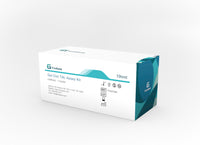
# Endotoxin Testing with LAL Reagents: Principles and Applications
Keyword: LAL Reagents for Endotoxin Testing
## Introduction to LAL Reagents
The Limulus Amebocyte Lysate (LAL) test has become the gold standard for endotoxin detection in pharmaceutical products, medical devices, and other healthcare applications. LAL reagents, derived from the blood of horseshoe crabs, provide a highly sensitive and specific method for detecting bacterial endotoxins.
## The Science Behind LAL Testing
### Principle of LAL Reaction
LAL reagents contain clotting factors that react specifically with bacterial endotoxins (lipopolysaccharides). When endotoxins are present, they trigger a cascade of enzymatic reactions that result in clot formation or color change, depending on the test method used.
### Types of LAL Tests
There are three main types of LAL tests:
1. Gel-clot method (qualitative)
2. Turbidimetric method (quantitative)
3. Chromogenic method (quantitative)
## Applications of LAL Reagents
### Pharmaceutical Industry
LAL testing is crucial for:
– Quality control of parenteral drugs
– Water for injection testing
– Raw material screening
– Finished product release testing
### Medical Device Testing
Medical devices that contact blood or cerebrospinal fluid must be tested for endotoxins using LAL reagents. This includes:
– Implantable devices
– Dialysis equipment
– Surgical instruments
## Advantages of LAL Testing
Compared to traditional rabbit pyrogen tests, LAL reagents offer:
– Higher sensitivity (detects pg/mL levels)
– Faster results (typically 15-60 minutes)
– Quantitative measurements
– Lower cost per test
– Reduced animal use
## Regulatory Considerations
LAL testing is recognized by major pharmacopeias including:
– United States Pharmacopeia (USP )
– European Pharmacopoeia (EP 2.6.14)
– Japanese Pharmacopoeia (JP 4.01)
## Future Developments
Researchers are exploring:
– Recombinant Factor C (rFC) as an alternative to LAL
– Automated LAL testing systems
– Improved detection limits for novel therapies
## Conclusion
LAL reagents remain the most reliable and widely accepted method for endotoxin detection. Their importance in ensuring patient safety continues to grow as new medical products and therapies are developed. Understanding the principles and proper applications of LAL testing is essential for professionals in pharmaceutical and medical device industries.